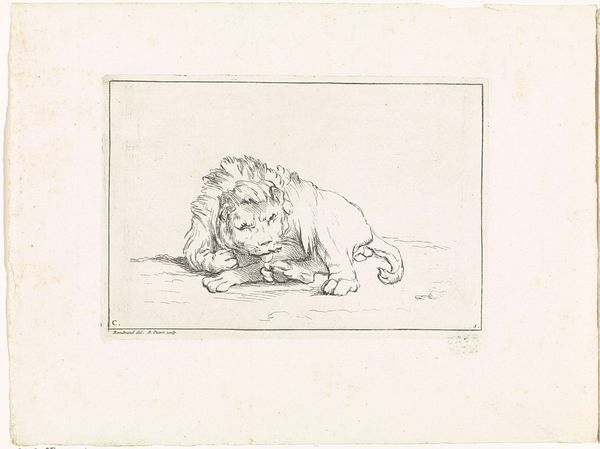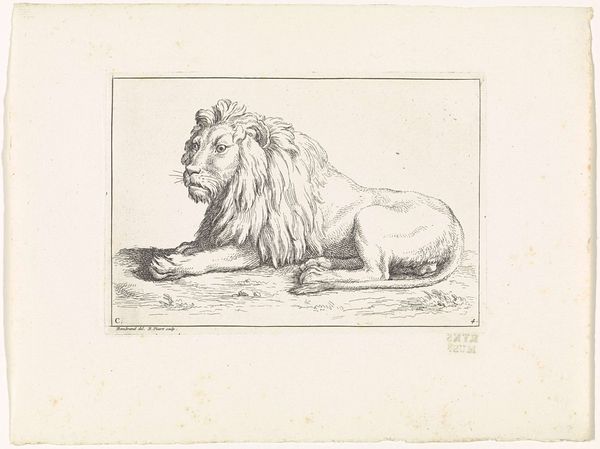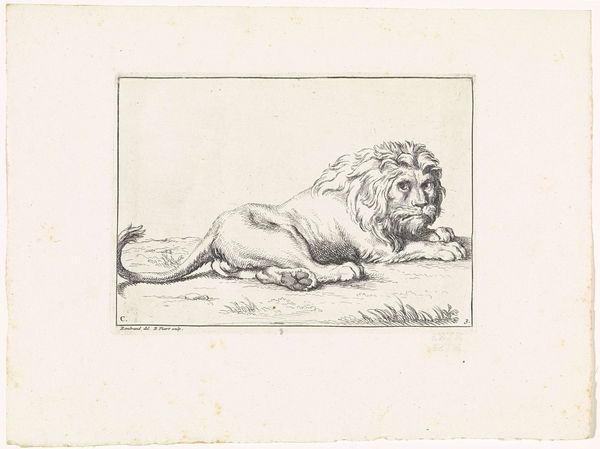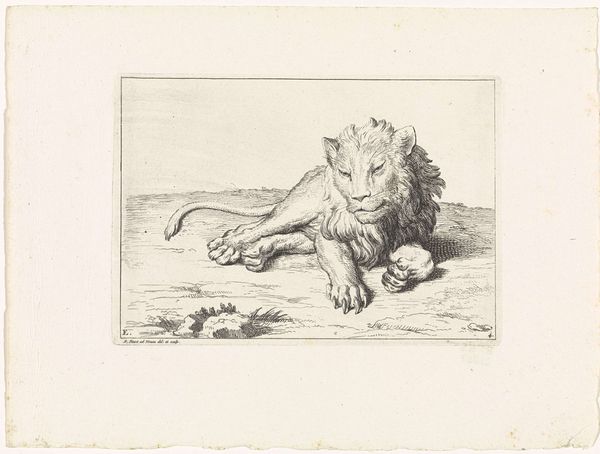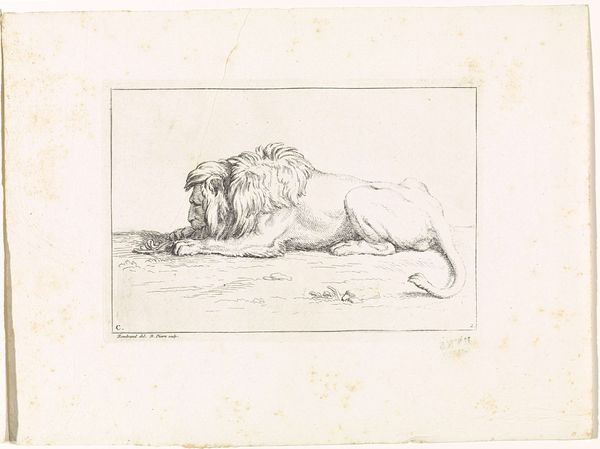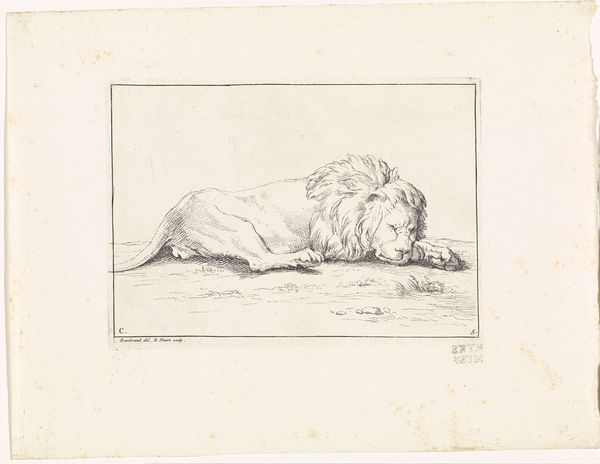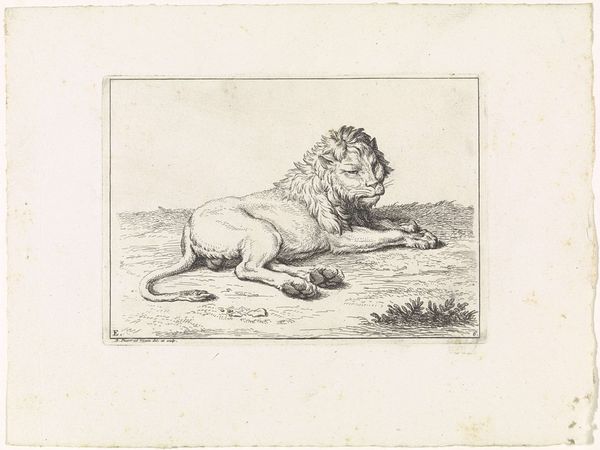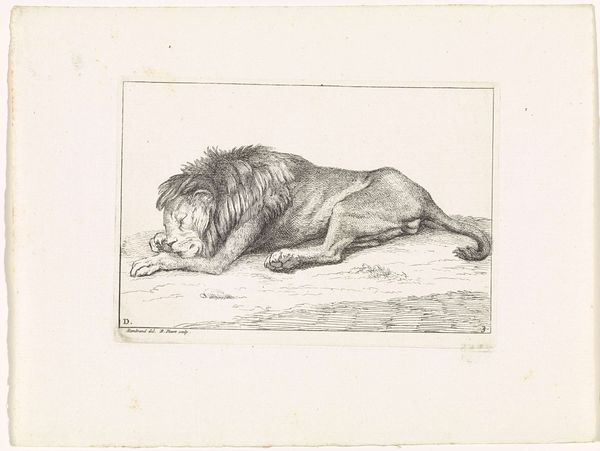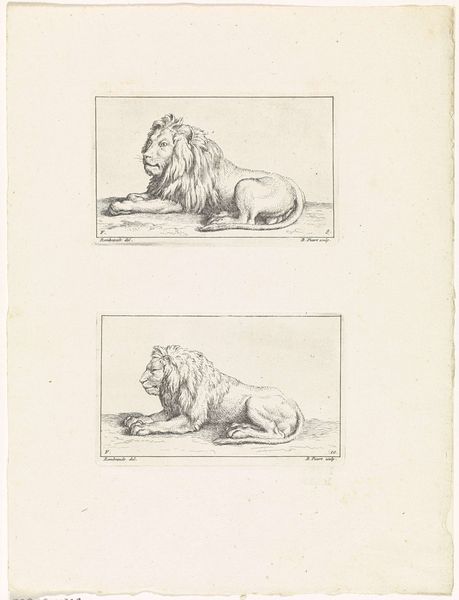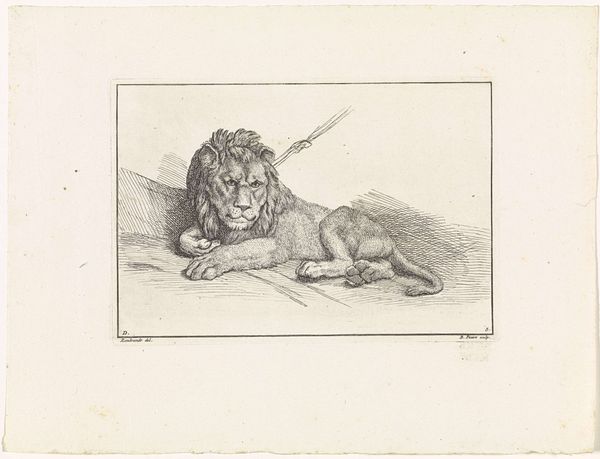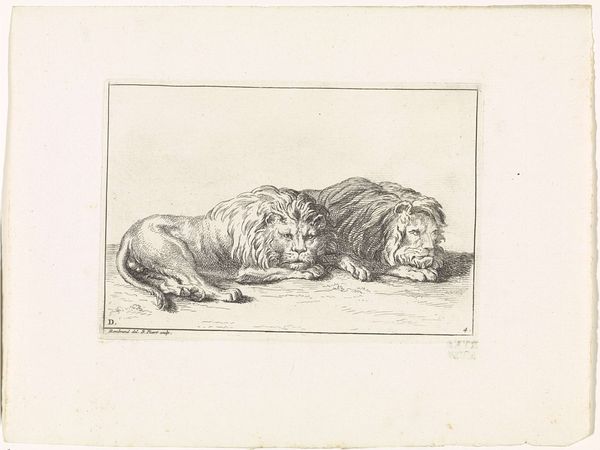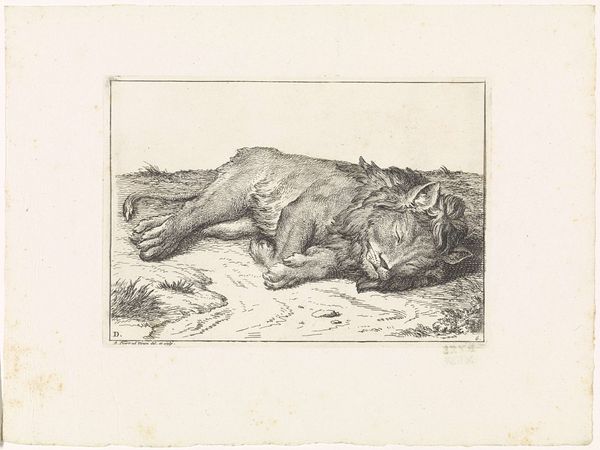
drawing, etching, paper, ink
#
portrait
#
drawing
#
baroque
#
etching
#
figuration
#
paper
#
ink
#
line
Dimensions: height 120 mm, width 178 mm
Copyright: Rijks Museum: Open Domain
Editor: Here we have "Lion on the Grass", made around 1729 by Bernard Picart, using etching in ink on paper. It's a simple drawing, a single lion curled up, and I’m immediately struck by how peaceful he seems, almost domestic. How do you read this piece? Curator: That tranquility grabs me too, you know? But look closer at the baroque details – the precise lines, the calculated shading… this lion is contained, framed by Picart’s hand and intellect, almost allegorical. There is this sense of taming, control...Does it feel to you a bit like an early animal study for scientific exploration, devoid of romanticism? Editor: I see what you mean, now that you point it out. The line work feels very clinical, less about capturing the *spirit* of the lion, and more about… documenting its form? Curator: Exactly! He’s almost like a specimen under observation. Though there's a glimmer of empathy there too; the way Picart renders the lion's sleepy face. Think about that push and pull, between detached study and recognition. I imagine the artist, scrutinizing this magnificent beast and seeing a little of himself, perhaps? In its slumber, the king of beasts has an vulnerability, but you will notice that even relaxed is fierce, like you should never be trust. Editor: So it's a meeting of science and self-reflection? That's not what I was expecting from a picture of a sleeping lion. Curator: Isn't that wonderful, though? Art surprises us! Maybe it’s an invitation to see ourselves reflected in unexpected places... Editor: It makes me consider the different ways we can "see" and understand the world around us, whether with scientific precision or empathetic observation. Curator: A delightful blend of perception and art!
Comments
No comments
Be the first to comment and join the conversation on the ultimate creative platform.
